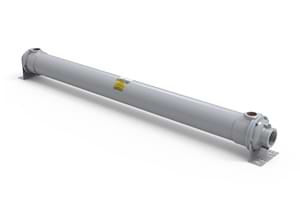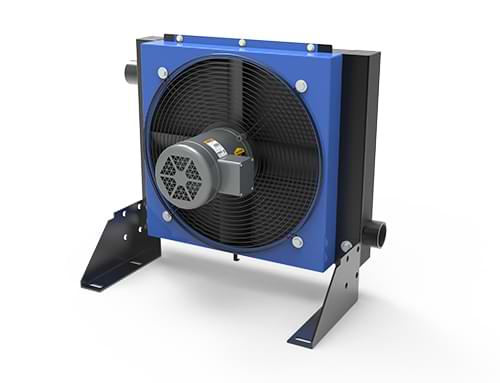Removing Moisture from Sandblasting Lines
Sandblasting, also known as abrasive blasting, involves the use of an air compressor to generate a high-pressure stream of air or other gas, which carries the abrasive particles. Common abrasives include sand, glass beads, aluminum oxide, silicon carbide, and even crushed walnut shells for softer applications. The method is highly effective for removing rust, paint, or other contaminants from metal, stone, concrete, or wood surfaces. It's also used for texturing surfaces, creating specific finishes, or preparing surfaces for coating or painting.
Applications
- Industrial Cleaning: Sandblasting is widely used to clean industrial equipment, such as boilers, tanks, and pipes, where rust or scale buildup can be detrimental.
- Restoration: In art and architecture, sandblasting can delicately remove layers of paint or grime from antiques or facades without damaging the underlying material.
- Engraving and Etching: For creating decorative patterns on glass, metal, or stone, sandblasting allows for precise control over the depth and texture of the design.
Water Cooled Aftercoolers
Compressor Cooling
- Fixed or Removable Tube Bundles
- Material Options Available
- Standard and Custom Options

Air Cooled Aftercoolers
Compressor Cooling
- Use Ambient Air to Cool
- Variety of Motor Options
- Standard Pressures of Up To 250 psi

Compressed air, as it leaves the compressor, is hot and laden with moisture due to the compression process. Temperatures can exceed 200°F (93°C), and this heat causes water vapor to remain suspended in the air. If this moist, hot air is used directly in sandblasting, it can wreak havoc on the operation. Moisture mixes with the abrasive material, causing it to clump, clog nozzles, and reduce the effectiveness of the blast. Wet abrasive can also lead to uneven finishes or, worse, corrosion on freshly cleaned metal surfaces. To prevent these issues, an aftercooler is employed to condition the air before it reaches the blasting equipment.
An aftercooler is a heat exchanger designed to cool compressed air to within 10-20°F (5-11°C) of ambient temperature. As the air cools, water vapor condenses into liquid form, which can then be separated out using a moisture separator or drain valve. The result is dry, cool air that ensures consistent abrasive flow and protects both the equipment and the workpiece. In sandblasting, where precision and surface quality are paramount, this step is non-negotiable. For example, in industrial applications like shipbuilding or automotive restoration, even minor moisture can compromise a paint job or lead to flash rust, undoing hours of work.
Beyond moisture control, aftercoolers enhance the longevity of sandblasting equipment. Hot, wet air accelerates wear on hoses, nozzles, and valves, increasing maintenance costs and downtime. By delivering cooler, drier air, aftercoolers reduce thermal stress and abrasive erosion within the system. They also improve operator safety and comfort—blasting with hot air in confined spaces or warm climates can be grueling, and cooler air mitigates this strain.
Choosing the right aftercooler depends on the scale of the operation. Portable units with fans or water-cooling systems work well for small to medium jobs, while large-scale industrial setups might require stationary, high-capacity models. Proper maintenance, like regular draining of collected water and checking for airflow restrictions, ensures optimal performance. In the end, an aftercooler isn’t just an accessory—it’s a cornerstone of effective, efficient sandblasting, safeguarding quality from compressor to surface.


